Check out some books by your tutor Fiona Veitch Smith … (click on the book covers to find out more)
 This is the third installment in our free online creative writing course. In this session we will look at how choosing a point of view can affect your writing. Whose story is it? When did it happen? What relationship do you want the reader to have with your main character? Athough point of view (POV) is most often discussed in connection with prose, we will also be looking at poetry.
This is the third installment in our free online creative writing course. In this session we will look at how choosing a point of view can affect your writing. Whose story is it? When did it happen? What relationship do you want the reader to have with your main character? Athough point of view (POV) is most often discussed in connection with prose, we will also be looking at poetry.
Exercise 8:
Look at the intro paragraph again. Is it in first, second or third person? What tense is being used? Why do you think I chose to write it like this? Look away now if you don’t want to know the answer!
The paragraph is in second person, present continuous tense. Which means, I am addressing you, the reader, directly (second person) as if you are reading it at the same time I am writing it. Why did I do that? … Pause to give you time to think … That’s right, because it gives the writing intimacy and immediacy. Through it you (hopefully) feel that I am talking directly to you. In theory, this should draw you into the article and make you feel welcome.
Exercise 9:
Let’s look at it again in first person past tense, then first person present. Compare both versions to the original and decide which you prefer. Why?
- This was the third installment in our free online creative writing course. In the session we looked at how choosing a point of view affected writing. Whose story was it? When did it happen? What relationship was wanted between the reader and the main character? Athough point of view (POV) was most often discussed in connection to prose, we also looked at poetry.
- This is the third installment in our free online creative writing course. In this session I look at how choosing a point of view can affect writing. Whose story is it? When did it happen? What relationship does the reader have with the main character? Athough point of view (POV) is most often discussed in connection to prose, I also look at poetry.
First Person POV
 Choosing a point of view will affect the way your reader relates to your story and the characters in it. As we’ve already said, first person gives an immediacy to your writing, as if it is happening as we read it. This can create tension in the plot and intimacy with the main character. However, the narrator of the story (the one speaking in first person) is not always the main character. This creates a distance between the person telling the story and the one the story is about. When choosing to have an ‘off-page’ narrator, make sure this is the effect you want to have. A good example of this is Joseph Conrad’s Heart of Darkness where there are two levels of narration. First, the unnamed narrator who meets a man called Marlow who then tells him about his search for a Mr Kurtz. Kurtz is the central character or protagonist of the book. Conrad’s choice of telling the story through Marlow via a secondary narrator keeps the enigmatic Kurtz at a distance so that we can identify with Marlow’s frustration of never getting close to his goal. In David Almond’s Clay however, the narrator and the main character are the same. Davie’s first-person narration enables the reader to get right inside his mind and share his nightmare with him. First person narration aids the writer in finding the ‘voice’ of a character. This is particularly useful in writing for children or young adults.
Choosing a point of view will affect the way your reader relates to your story and the characters in it. As we’ve already said, first person gives an immediacy to your writing, as if it is happening as we read it. This can create tension in the plot and intimacy with the main character. However, the narrator of the story (the one speaking in first person) is not always the main character. This creates a distance between the person telling the story and the one the story is about. When choosing to have an ‘off-page’ narrator, make sure this is the effect you want to have. A good example of this is Joseph Conrad’s Heart of Darkness where there are two levels of narration. First, the unnamed narrator who meets a man called Marlow who then tells him about his search for a Mr Kurtz. Kurtz is the central character or protagonist of the book. Conrad’s choice of telling the story through Marlow via a secondary narrator keeps the enigmatic Kurtz at a distance so that we can identify with Marlow’s frustration of never getting close to his goal. In David Almond’s Clay however, the narrator and the main character are the same. Davie’s first-person narration enables the reader to get right inside his mind and share his nightmare with him. First person narration aids the writer in finding the ‘voice’ of a character. This is particularly useful in writing for children or young adults.
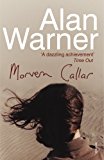 Our tendency as readers is to trust the voice of the narrator, but what happens when the narrator is untrustworthy? Take for example Alan Warner’s Morvern Callar, when we don’t know whether or not she is telling us the truth about anything. Again, if you take this tack, make sure you are prepared for the intended effect.
Our tendency as readers is to trust the voice of the narrator, but what happens when the narrator is untrustworthy? Take for example Alan Warner’s Morvern Callar, when we don’t know whether or not she is telling us the truth about anything. Again, if you take this tack, make sure you are prepared for the intended effect.
While identifying with the main character / narrator is a strength of first person POV, it can also be a limitation as the reader is restricted to receiving the story through only one person’s perspective. It is tempting for novice writers to leap from one person’s POV to another to give a fuller picture, however this is considered bad practise. One of the first rules of writing is: stick to one POV. Some writers manage to get around this by attributing sections of a book or alternating chapters to different characters (for example William Faulkner’s The Sound and the Fury) but shifting within a scene or even worse, a paragraph, is a no-no.
Second Person POV
 Second person point of view was very fashionable in the 19th century, when ‘Dear Reader’ was frequently addressed in the text, as if the narrator was just checking to see that they were still listening. Nowadays, it is not used as much in prose because it is considered self-conscious and unnecessarily draws attention to the writer. This is not always the case, however, and the award winning Vernon God Little by DBC Pierre uses second person to good effect (‘when you spot a jackrabbit it automatically spots you back; it’s a fact of nature, in case you didn’t know’), although he does not use second person throughout. It is quite acceptable to shift from first to second person, but not to third. The reason for this is that the character addressing the reader is the same in first and second person so the perspective does not actually change. One of the benefits of second person narration mixed in with first is a more conspiratorial tone. In this voice, as happens in Vernon God Little, the narrator may choose to shock or offend the reader as if daring them to continue reading.
Second person point of view was very fashionable in the 19th century, when ‘Dear Reader’ was frequently addressed in the text, as if the narrator was just checking to see that they were still listening. Nowadays, it is not used as much in prose because it is considered self-conscious and unnecessarily draws attention to the writer. This is not always the case, however, and the award winning Vernon God Little by DBC Pierre uses second person to good effect (‘when you spot a jackrabbit it automatically spots you back; it’s a fact of nature, in case you didn’t know’), although he does not use second person throughout. It is quite acceptable to shift from first to second person, but not to third. The reason for this is that the character addressing the reader is the same in first and second person so the perspective does not actually change. One of the benefits of second person narration mixed in with first is a more conspiratorial tone. In this voice, as happens in Vernon God Little, the narrator may choose to shock or offend the reader as if daring them to continue reading.
It is difficult (and annoying!) to sustain a second person POV throughout a piece of prose, but is more achievable in poetry. It’s as if the poet is catching the reader’s eye and asking them to share in a moment with them:
‘Are you able to wonder?
Or is it just your indomitable will and pride of the first life …’ (from ‘Baby Tortoise, DH Lawrence)
Third Person POV
This is generally the easiest point of view to write. It has the advantage of flowing naturally and allows the writer to describe how he or she sees a scene as if watching a film. It also allows the writer, to use another film metaphor, to move in and out of close-up and wide shots with ease. The ‘voice’ describing the scene is often called an ‘omniscient narrator’ as they have a God-like view. It is particularly useful in scenes with a number of characters and also in scenes with no characters at all. In third person narration we can see the outside of a farmhouse, the dying crops and starving animals, before we ever meet the farming family. Our knowledge of the character’s physical plight will influence our reaction to them at first sight. This of course can be achieved through first person – accompanying a character as he or she walks towards the farmhouse – but it will be filtered through the individual’s subjectivity.
The danger of third person narration is that the reader may feel alienated from the main character as we don’t know how they feel. This can be solved by using something called ‘third person intimate’ narration which has the advantage of an omniscient narrator while focusing intimately on one character thoughts and feelings.
For example:
‘It so happened that Lucy, who found daily life rather chaotic, entered a more solid world when she opened the piano.’ (From E.M. Forster’s A Room with a View).
How do we know this is third person intimate rather than just third person? Because we are told how Lucy feels. But, unlike first person which would have the same effect, we are not restricted to her perspective alone. Later in the scene we suddenly switch to
‘Mr Beebe, sitting unnoticed in the window (who) pondered over this illogical element in Miss Honeychurch.’
Past, Present and Future Tense
 The POV of a piece of writing relates to who is guiding us through the text. The tense, tells us when the events of the piece happen. Past tense has the advantage of telling after the fact so that we are confident the narrator has full knowledge of what has happened and can reflect on its meaning on our behalf. It is also the easiest to write; third person past tense flows very easily from a writer’s pen. Present tense, like first person, has a sense of immediacy; we experience the events along with the writer. While it may be more intimate, it is less secure, as there is no guide who has been before. This adds tension to the text which can be very effective. Most books or poems are written in either past or present tense, but some mix them up. For example, Leaning Towards Infinity by Sue Woolfe. I have yet to come across a book or story written in future tense (please let me know if you have) but some poetry is written in this form as a musing of things to come. It is not appropriate to mix tenses in sentences or paragraphs but can be done between larger sections of text. When this happens use a double line break to mark a shift in time.
The POV of a piece of writing relates to who is guiding us through the text. The tense, tells us when the events of the piece happen. Past tense has the advantage of telling after the fact so that we are confident the narrator has full knowledge of what has happened and can reflect on its meaning on our behalf. It is also the easiest to write; third person past tense flows very easily from a writer’s pen. Present tense, like first person, has a sense of immediacy; we experience the events along with the writer. While it may be more intimate, it is less secure, as there is no guide who has been before. This adds tension to the text which can be very effective. Most books or poems are written in either past or present tense, but some mix them up. For example, Leaning Towards Infinity by Sue Woolfe. I have yet to come across a book or story written in future tense (please let me know if you have) but some poetry is written in this form as a musing of things to come. It is not appropriate to mix tenses in sentences or paragraphs but can be done between larger sections of text. When this happens use a double line break to mark a shift in time.
Exercise 10:
Take a piece of creative writing that you have already done; either a poem or a piece of prose (perhaps you could use one of the exercises from our previous sessions). Firstly, identify whether it is in first, second or third person and its tense. Now play around with the POV. How does it change your intended effect? Which POV is best suited to the piece? Why? Now, play around with the tense. What difference does it make if it is in past, present or future?
Next week’s creative writing course topic is bringing your writing to life.
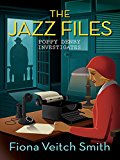
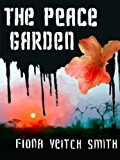
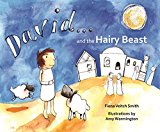
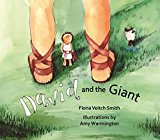
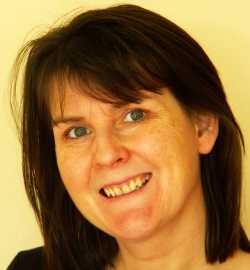 Welcome to The Crafty Writer's free online creative writing course, presented by Fiona Veitch Smith, a freelance journalist, editor, author, playwright, screenwriter and writing teacher. I hope that you'll see a dramatic improvement in the quality of your writing as you work through this course.
Welcome to The Crafty Writer's free online creative writing course, presented by Fiona Veitch Smith, a freelance journalist, editor, author, playwright, screenwriter and writing teacher. I hope that you'll see a dramatic improvement in the quality of your writing as you work through this course. 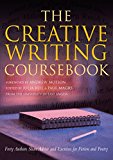
Exercise 8… what “intro paragraph”? Sometimes I cannot follow you
The intro paragraph of this session. The paragraph above Exercise 8. Just as well you aren’t paying for this course, then you’d be really worried if you couldn’t follow me Happy writing.
Happy writing.
Hello , how are you? I am reading your site and want to download the 8 step free creative writing course but am using a Pc from which I cannot download. Could you please email me the 8 step course? Thanking You , Liza Fulmer. lizamirandafulmer7@outlook.com
I’m afraid this is all there is Liza. It’s only available online not in email form or to download.
Very clear and helpful.
this was super helpful! thanks
You’re most welcome. Hope you find the rest of the course the same.
Can you put all the point of views together and say how they create tension need help immediately!!
I don’t understand your question. Can you rephrase it please? Are you asking if in a single piece of writing all the points of view can be used?
I realized that the third person POV is the best.And the best tense is the Past one. Am I right or wrong?
There is no ‘best’ POV or tense. There are personal preferences about what writers prefer to read and writers prefer to write. There are also fashions that come and go. Past tense third person is currently the most common style of writing but it doesn’t make it the ‘best’.
I have written in first and third person. If you click on the books above, The Peace Garden is written in a mix of first and omniscient third person, with the middle section being third person omniscient narration, past tense. The Jazz Files is written in first person intimate, past tense. However, I have also written in first person present tense – one of the stories in my short story collection Different Tracks called ‘Another Man’s Shoes’. And for a children’s magazine I have written in second person past tense.
Great overview. I was a little unclear as to whether you consider first or second person POV as being more intimate and immediate? Also, in one of your responses (above) you mentioned omniscient third person. Is this different to just plain old third person? Last question (promise) – The Jazz Files is written in first person intimate, past tense. Would this be used in much the same way as third person intimate POV? Really enloying this and thank you.
Hi Steve. Intimate POV is when you enter into the character’s thoughts and feelings. So we are not just observing what the character does, but how they are intimately relating to the world. Obviously first person is the most intimate, but we can slip into an intimacy in third and second person by becoming privy to their thoughts. Second person as a whole tends to set up a closer relationship between the writer and the reader as the reader is being addressed almost as a character. So I think that is more intimate and immediate. But we can have moments of immediacy and intimacy in third person too when we at times become privy to the thoughts and feelings of the character. Consider it like a camera shot: wide shot, medium shot, close up, extreme close up. Consider going in and out of intimate third person as moving between these shots. The Jazz Files is written in intimate THIRD person, not first. If I said FIRST somewhere in the comments, that was an error. Sorry. Omniscient third person is quite an old fashioned style – very popular in Victorian literature. It’s when the writer is almost like a character in the story. They control what you see and don’t see. Whereas with intimate third or first person, a point of view character is used to direct the reader’s attention. In second person the POV character is the reader themselves, directed by by the writer. eg You notice a dim light in the distance. You wonder what it might mean …
No mention of Deep pov? (close third person.) That’s what I need help with. Its like first oerson but with he/she and a little more freedom.
Yes there is. That’s the same as intimate third person – look under ‘third person’. For further examples my book The Peace Garden has the middle section written in intimate third person and my novel The Jazz Files, the whole book is written in intimate (what you call ‘deep’) third person. Click on the book covers above to find them. Good luck.
In my opinion, the introductory paragraph is in the first person plural, with the second person being addressed (which often happens in first person singular).
In this session we will look at how…… We must be a first person plural but the subsequent questions could have been asked by or addressed to any, first, second or third person.
i have enjoined writing i think i will give this a website a 7-10 because it had some interesting tips to read.
and beginner writers could use these tips….
I’ve been enjoying this course, but I really enjoyed this session. It helped me see errors I’ve been making in my writing and how to set a better tone in my stories. This is a huge missing piece I have had. Thank you!!
I’m so glad you’ve had a breakthrough Heather. Thanks for letting me know.
This POV is so interesting! I hadn’t thought about it before. A valuable exercise to take a piece already written and play around with POV and tense. It completely changes the writing and sometimes for the better!
Is point of view and view point just the same?
It depends on the context. Sometimes view point can mean someone’s opinion or attitude. Point of view in literary terms is the character through which the action is seen and communicated to the reader. Although occasionally view point is used to mean the same thing.
I truly enjoyed this lesson. I am struggling to decide on which of two characters in my writing to make the POV character. Problem is that the more interesting character would die eventually so I can’t make her the POV character. Yet I know she’ll be the character that readers would fall in love with readily. What can I do?
Hello Nneka, it’s possible to have more than one POV character. You could alternate sections. Good luck!
Thank you Fiona for your prompt response.
The challenge is that I wanted to make it strictly first person POV. Two POV characters makes that a little difficult I guess.
Well, I’ll see how it goes.
Thanks again.
You can can still stick with first person when you switch POV. Good luck making your decision.
A very useful course. I find the comments very useful as I am moving from poetry to short stories.
Excellent! Glad to be of service.